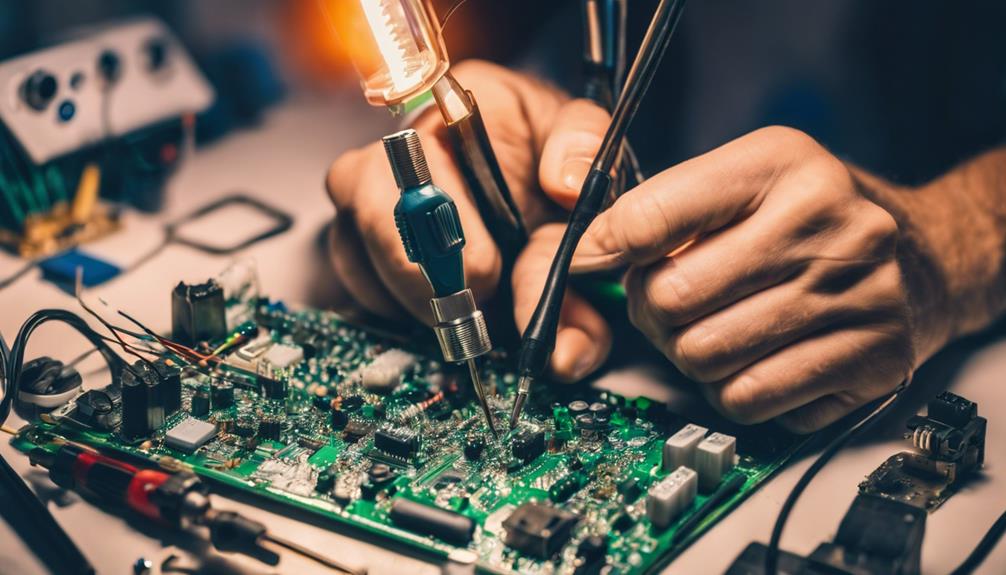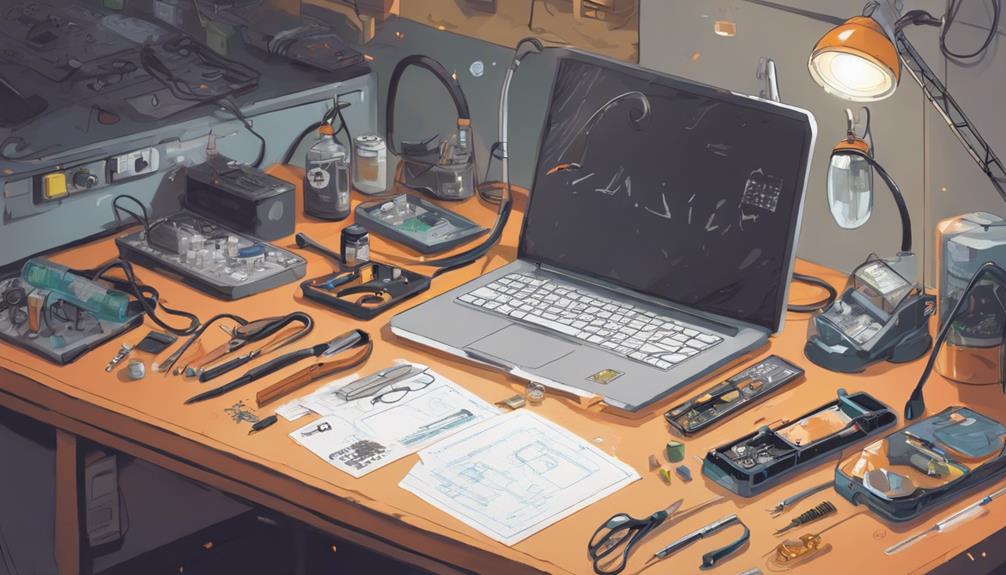Mastering soldering basics is essential for reliable PCB assembly, as it involves precise heat transfer, controlled solder flow, and accurate component placement to establish strong bonds and reliable electrical connections. Understanding soldering fundamentals, including proper temperature control, flux application, and component placement, is vital for successful PCB assembly. By grasping these basics, manufacturers can guarantee high-quality joints, minimizing defects and ensuring reliable PCB operation. Additionally, exploring advanced techniques, such as reflow soldering and surface mount soldering, can lead to enhanced efficiency and precision in PCB assembly.
Key Takeaways
- Ensure proper temperature control for strong, reliable bonds, as it's crucial for mastering soldering basics.
- Apply the right amount of solder to each joint, striving for perfect solder flow and removing excess with a solder wick.
- Understand the importance of flux in facilitating solder flow and joint quality, and learn to properly apply and remove it.
- Master hand soldering methods, including through-hole and drag soldering, for reliable surface-mounted component connections.
- Pay attention to component placement, ensuring accurate alignment and orientation for successful solder joint formation and reliable PCB assembly.
Basic Soldering Techniques for Beginners
When starting a soldering project, an important first step for beginners is to make sure their soldering iron is properly tinned, as this facilitates efficient heat transfer and ideal solder flow. A well-tinned soldering iron tip guarantees a strong bond between the solder and the iron, allowing for seamless heat conduction.
Next, it's essential to apply the right amount of solder to each joint, as excessive solder can lead to weak connections and a mess. Beginners often struggle with achieving the perfect solder flow, but by using the correct amount of solder, they can guarantee strong and reliable connections.
Additionally, removing excess solder using a solder wick is crucial in achieving clean and professional-looking joints. By mastering these basic soldering techniques, beginners can confidently approach their projects, knowing they've laid the foundation for a reliable and efficient soldering process.
Understanding Soldering Fundamentals
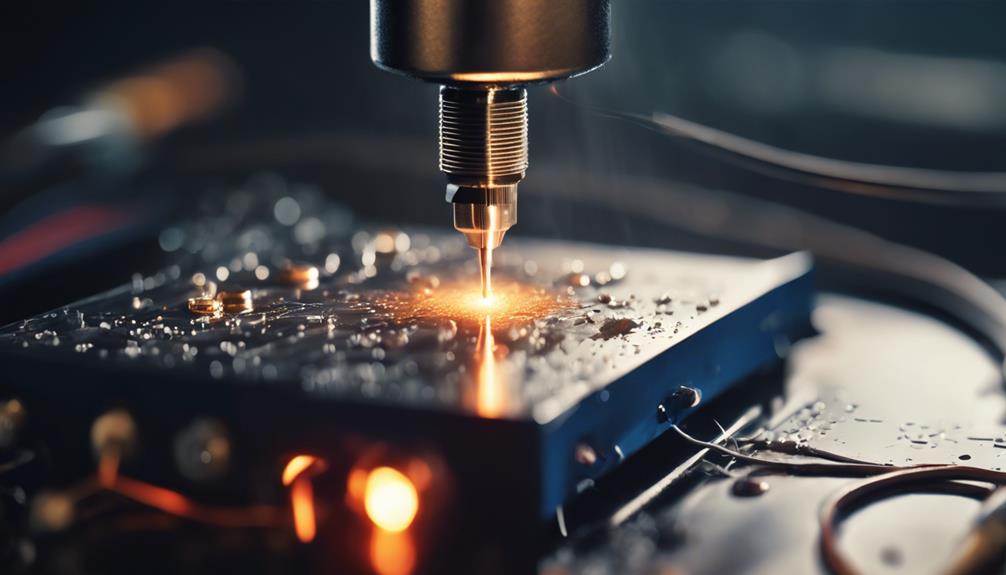
Understanding the fundamental principles of soldering is essential for achieving reliable and efficient electrical connections.
This involves grasping the underlying soldering principles, which encompass the scientific and technical aspects of the process.
Soldering Principles
At the heart of successful soldering lies a deep understanding of the fundamental principles that govern the soldering process. Soldering, the process of joining metal components using molten solder, relies on precise control of heat transfer to form strong bonds.
Proper temperature control is essential for successful solder joints, as excessive heat can damage components or compromise joint integrity. The application of flux aids in solder flow and enhances the quality of joints, guaranteeing reliable electrical connections on printed circuit boards (PCBs).
Understanding the principles of heat transfer is vital for mastering soldering techniques, as it enables the controlled flow of heat energy to the solder joint. By grasping these fundamental principles, engineers and technicians can create high-quality solder joints that safeguard the reliability of PCB assemblies.
Soldering Safety Essentials
Soldering operations inherently involve risks, and recognizing these hazards is essential to preventing injuries, minimizing damage, and guaranteeing effective soldering outcomes. To prioritize soldering safety, it is imperative to maintain a clean workspace, free from clutter and tripping hazards, and confirm proper ventilation to prevent inhalation of harmful fumes.
| Hazard | Prevention Measure | Rationale |
|---|---|---|
| Burns from molten solder | Wear heat-resistant gloves and protective eyewear | Prevents skin and eye injuries from splashes and spills |
| Inhaling toxic fumes | Use a fume extractor or ventilated workspace | Reduces risk of respiratory problems and eye irritation |
| Electrical shock | Ensure proper insulation and grounding of equipment | Prevents electrical shock and fire hazards |
| Fire hazards | Keep a fire extinguisher nearby and avoid overheating components | Minimizes risk of fire and equipment damage |
| Poor solder joints | Control temperature and use appropriate solder alloy composition | Ensures strong bonds and reliable connections |
Hand Soldering Methods Explained
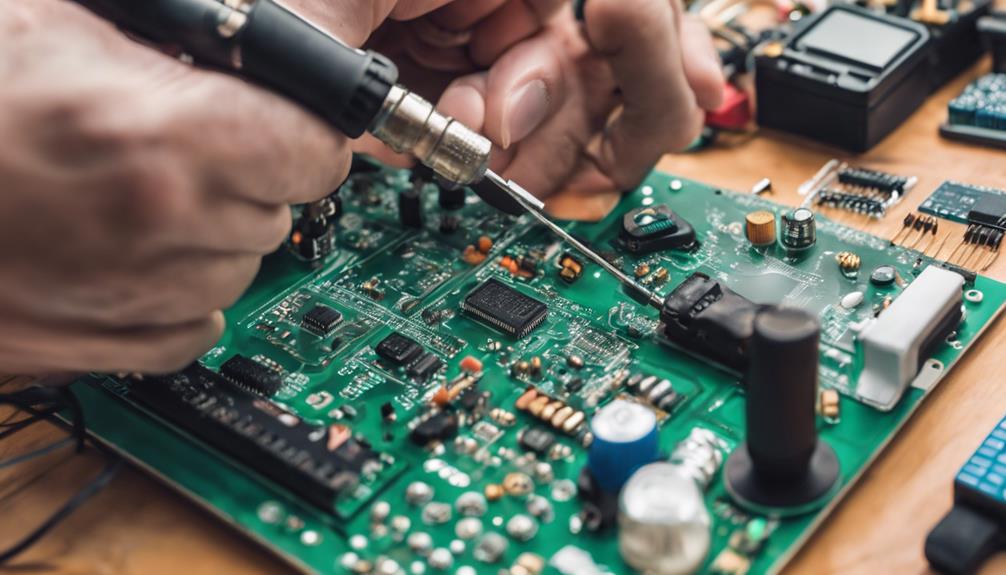
Hand soldering, a fundamental technique in electronics assembly, encompasses various methods that cater to specific component types and PCB configurations. This versatility is important for achieving reliable PCB assembly.
When it comes to hand soldering, proper technique and attention to detail are necessary for producing high-quality joints.
To guarantee reliable connections, it is vital to master the following hand soldering methods:
- Through-hole soldering: Insert component leads into PCB holes, ensuring secure connections and minimizing the risk of solder bridges.
- Drag soldering: Effectively solder surface-mounted components by applying flux and using a soldering iron with precision.
- Component placement: Strategically place components to prevent solder bridges and cold joints, ensuring excellent PCB functionality.
Surface Mount Soldering Essentials
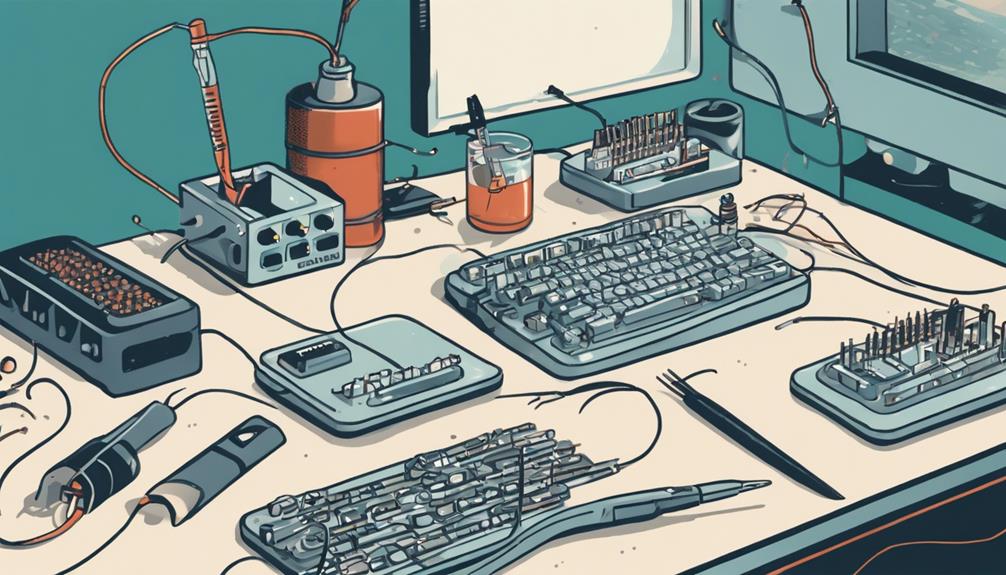
In surface mount soldering, precise component placement and accurate solder paste application are critical to achieving reliable joints. Mastering these skills is essential to producing high-quality electronic assemblies.
In this section, we will examine the key aspects of surface mount soldering, including:
- Component placement techniques
- Solder paste application
- Rework and repair methods.
Component Placement Techniques
Precise alignment and orientation of components on the PCB surface is paramount, as even slight misplacements can compromise the entire assembly's reliability. In surface mount soldering, components are mounted directly onto the PCB surface without leads passing through holes, making accurate placement critical.
To achieve this, solder paste is applied to the PCB pads before components are placed, facilitating adhesion and electrical connections.
Proper component placement techniques are essential for ensuring the overall reliability and performance of the PCB assembly. Here are some key considerations for effective component placement:
- Automated equipment like pick-and-place machines can help streamline the component placement process for efficient surface mount soldering.
- Components must be precisely aligned with the PCB pads to ensure proper electrical connections.
- Solder paste application and component placement must be carefully coordinated to prevent misalignments and ensure reliable joints.
Solder Paste Application
Accurate solder paste application is pivotal to achieving reliable and consistent solder joints, as it directly influences the quality of the surface mount soldering process. The composition, particle size, and flux content of the solder paste play a vital role in achieving high-quality solder joints.
To guarantee optimal results, precise stencil printing techniques are employed to deposit the right amount of solder paste onto the PCB pads. This controlled application is essential for successful component attachment.
Inadequate solder paste application can lead to solder joint defects, compromising the overall reliability and performance of the PCB assembly. By controlling the solder paste's reflow process, including heating and cooling stages, manufacturers can achieve high-quality solder joints.
Proper solder paste application ensures accurate and consistent coverage on PCB pads, paving the way for successful surface mount soldering. By mastering solder paste application, manufacturers can minimize solder joint defects and produce reliable PCB assemblies.
Rework and Repair
Rework and repair are essential steps in surface mount soldering, as they allow for the correction of defects and imperfections that can arise during the assembly process. These steps demand precision and skill to guarantee high-quality, reliable solder joints on PCBs. Rework involves fixing defects on SMT components without damaging the PCB, and is often necessary to address solder bridges, tombstoning, or misaligned components.
To achieve successful rework, technicians use specialized tools and techniques, including:
- Rework stations with hot air guns or soldering irons for precise component removal and replacement
- Proper application of flux and even heating of components to prevent damage
- Desoldering braid for excess solder removal and cleaning of the PCB surface
Reflow Soldering Best Practices

When implementing reflow soldering, it is essential to establish a well-controlled thermal profile, as this critical process parameter directly influences the quality and reliability of the resulting solder joints. By applying solder paste to component pads, reflow soldering allows for precise control over the soldering process. Proper temperature profiling ensures that the solder paste melts, wets, and solidifies correctly, resulting in reliable joints.
This automated process eliminates manual soldering errors, reduces solder bridging, and ensures consistent, uniform solder joints. Additionally, reflow soldering machines optimize production efficiency, quality consistency, and overall reliability of PCB assemblies. By mastering reflow soldering best practices, manufacturers can achieve high-quality, high-reliability PCB assemblies.
To achieve excellent results, it is crucial to carefully control heating rates, soaking temperatures, and cooling phases during the reflow process. By doing so, manufacturers can guarantee that their PCB assemblies meet the highest standards of quality and reliability.
Wave Soldering for PCB Assembly

In the domain of PCB assembly, wave soldering stands out as a tried-and-true method for creating robust solder joints on through-hole components. This process involves a wave of molten solder flowing over the board, guaranteeing uniform solder application and high-quality joints. Wave soldering is particularly efficient for high-volume production, reducing manual labor and guaranteeing consistent soldering quality.
The process begins with components being prepped with flux before passing over the solder wave, facilitating solder flow and joint formation. Wave soldering machines are designed to accommodate different PCB sizes and component densities, with adjustable conveyor speeds and solder wave heights.
Key benefits of wave soldering include:
- Cost-effective: Reduces manual labor and guarantees consistent soldering quality
- Efficient: Suitable for high-volume production and through-hole components
- Reliable: Guarantees robust solder joints and high-quality PCB assembly
Selective Soldering Techniques
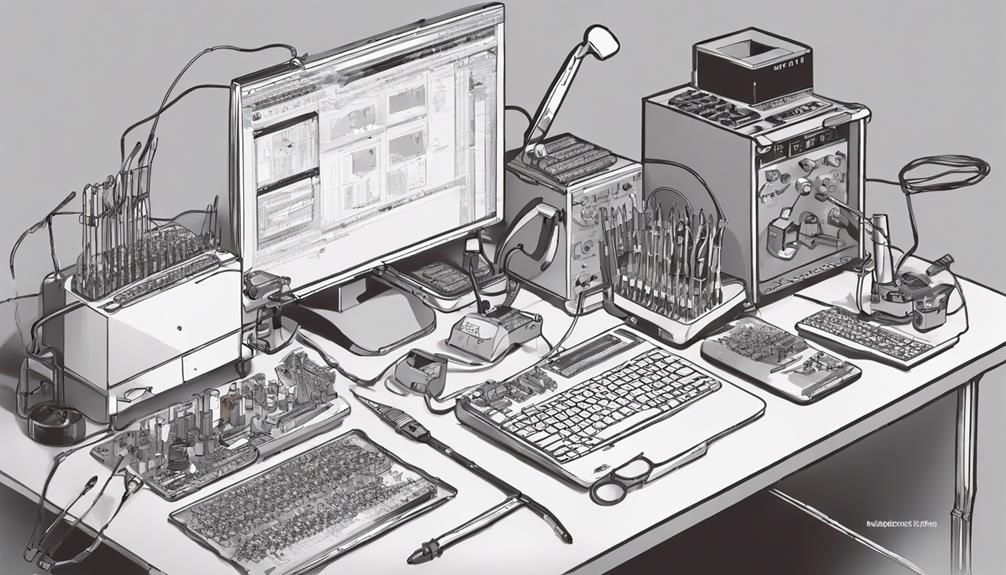
Within the domain of selective soldering techniques, various methods can be employed to achieve best results. This includes Wave Soldering Methods, which utilize a molten solder bath to join components.
Hand Soldering Techniques rely on manual dexterity and precision.
Robotics-Assisted Soldering leverages automation for enhanced accuracy.
Wave Soldering Methods
Employing wave soldering methods, manufacturers can efficiently assemble printed circuit boards (PCBs) by immersing the entire board in a molten solder wave, facilitating rapid and reliable connections. This technique is particularly suited for through-hole components, allowing for high-volume production with consistent results. Wave soldering offers an automated solution for PCB assembly, reducing the risk of human error and increasing overall efficiency.
Here are some key benefits of wave soldering methods:
- Efficient assembly: Wave soldering enables rapid and reliable connections, making it ideal for high-volume production.
- Reduced solder defects: By immersing the entire board in a molten solder wave, wave soldering minimizes the risk of solder defects, ensuring high-quality solder joints.
- Automated solution: Wave soldering offers an automated solution for PCB assembly, reducing the risk of human error and increasing overall efficiency.
In contrast to selective soldering, which targets specific areas of the PCB, wave soldering is a more all-encompassing approach that can be used for a wide range of PCB assemblies. By understanding the principles of wave soldering, manufacturers can optimize their PCB assembly processes and improve overall product reliability.
Hand Soldering Techniques
For precise control over the soldering process, hand soldering techniques, also known as selective soldering, are essential for assembling printed circuit boards with complex component arrangements. This technique allows for targeted soldering of specific components, ensuring reliable connections and minimizing the risk of overheating or damaging nearby components.
Selective soldering techniques are particularly useful when working with through-hole components, where precision is vital. By using a soldering iron with a fine iron tip, assembly technicians can accurately apply solder to the desired areas, reducing the risk of soldering defects.
| Soldering Method | Advantages | Applications |
|---|---|---|
| Selective Soldering | Precise control, minimizes overheating risk | Complex PCB assemblies, through-hole components |
| Wave Soldering | High-throughput, cost-effective | High-volume PCB production |
| Hand Soldering | Flexibility, adaptability | Prototype development, small-batch production |
Robotics-Assisted Soldering
Building on the precision control offered by hand soldering techniques, robotics-assisted selective soldering takes this concept to the next level by leveraging automation to achieve unparalleled accuracy and consistency in PCB assembly. This technology enables precise control over the soldering process, guaranteeing consistent solder joint quality and reducing human error in the assembly process.
Robotics-assisted soldering is particularly effective for complex PCB designs with varying component sizes and densities. Selective soldering machines can target specific areas on the PCB for solder application, ensuring accurate and reliable connections.
Some key benefits of robotics-assisted soldering include:
- Improved efficiency and throughput: Automated selective soldering streamlines the assembly process, reducing production time and increasing overall productivity.
- Enhanced precision and consistency: Robotics-assisted soldering guarantees consistent solder joint quality, reducing the risk of defects and improving overall PCB reliability.
- Increased flexibility: Robotics-assisted soldering can accommodate complex PCB designs and varying component sizes, making it an ideal solution for diverse assembly requirements.
Solder Joint Formation Fundamentals
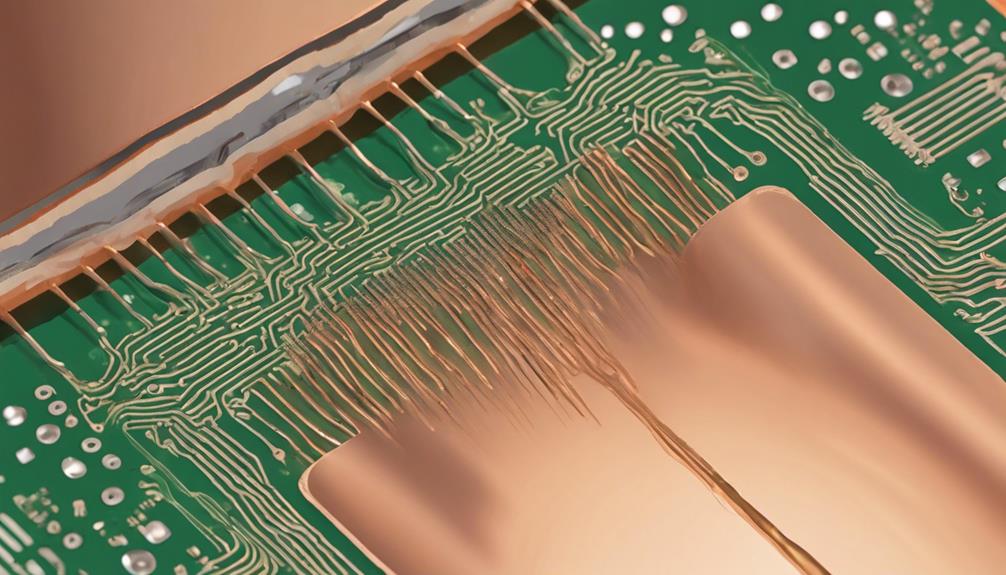
During the soldering process, molten solder flows into the gap between metal components on a printed circuit board (PCB), forming a strong, reliable bond that guarantees electrical continuity and mechanical strength. This solder joint formation is an essential aspect of PCB assembly, as it establishes a secure connection between components.
To achieve reliable solder joints, proper temperature control is necessary. The ideal temperature range allows the solder to melt and flow smoothly, filling the gap between components. Flux application also plays a critical role in solder joint formation, as it removes oxides and contaminants from the metal surfaces, ensuring a clean and strong bond.
By controlling temperature and applying flux, the solder can flow freely, forming a robust connection. The subsequent cooling process solidifies the molten solder, resulting in a strong, reliable bond.
Effective solder joint formation is crucial for establishing electrical connections and enhancing PCB reliability. By mastering the fundamentals of solder joint formation, manufacturers can guarantee the production of high-quality PCBs that meet the demands of modern electronics.
Flux Application and Removal

Proper flux application is vital in facilitating the soldering process, as it enables the removal of oxides and contaminants from metal surfaces, allowing for reliable and clean solder joints. By removing oxides, flux guarantees that the solder flows smoothly and evenly, preventing the formation of solder balls and bridges. Additionally, flux application helps to prevent corrosion and ensures PCB reliability.
When it comes to flux application and removal, there are a few key considerations to keep in mind:
- Using the right type of flux for specific applications is essential for successful soldering.
- Flux residue should be removed after soldering to prevent corrosion and maintain PCB reliability.
- Proper flux application ensures clean and reliable solder joints, which is critical for PCB assembly.
Temperature Control for Soldering
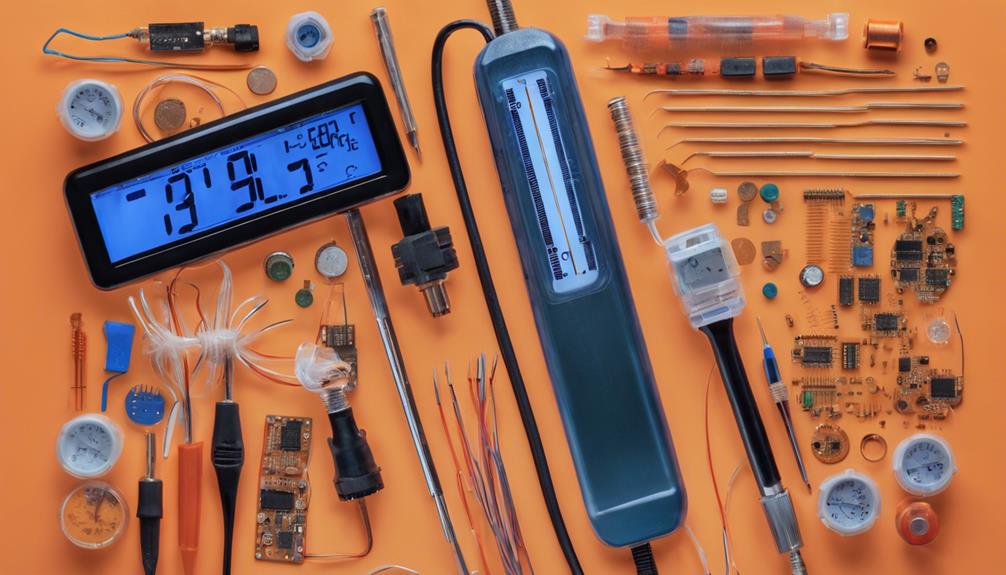
What temperature range is necessary to achieve ideal solder flow and joint quality, and how does this vary depending on the type of components and solder being used?
The answer lies in precise temperature control, a critical factor in successful soldering. The soldering iron temperature must be adjusted according to the specific components and solder alloys being used to prevent damage and ensure peak joint quality.
Different solder alloys have distinct temperature requirements, with lead-free solder typically necessitating higher temperatures than lead-based solder. Excessive heat can lead to component damage or burnt PCBs, while insufficient heat results in weak joints and poor conductivity.
Maintaining a consistent temperature throughout the soldering process is crucial for uniform and reliable solder joints.
Proper temperature control is essential to achieve strong, reliable bonds between components and the PCB. By understanding the specific temperature requirements for various solder alloys and components, manufacturers can guarantee high-quality solder joints and prevent defects.
Component Placement for Soldering
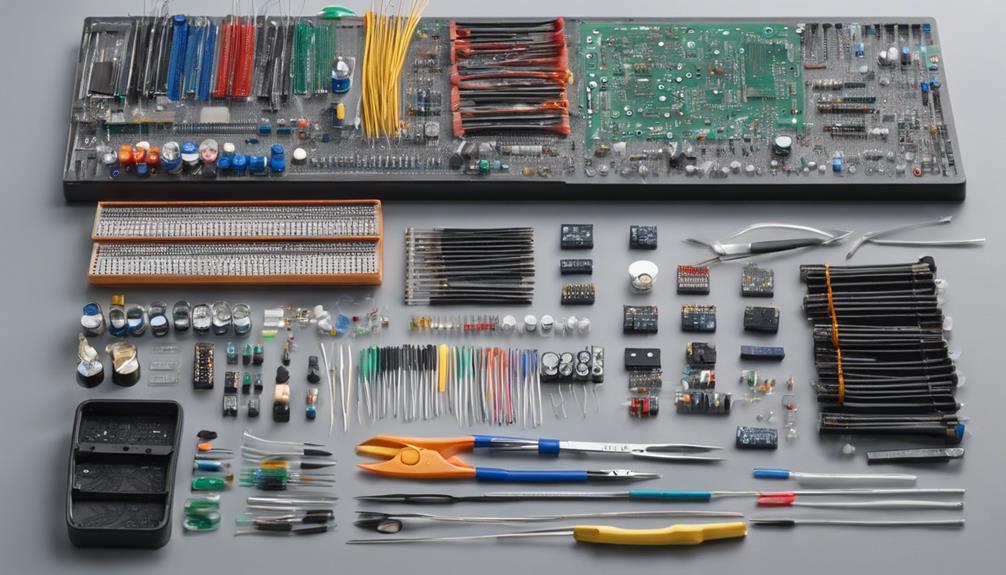
Accurate component placement is pivotal to ensuring reliable electrical connections and preventing common soldering defects, such as solder bridges and cold joints, in printed circuit board assembly. Proper placement ensures ideal electrical connections during soldering, and incorrect placement can lead to defects and poor connections.
To achieve high-quality PCB assembly, precision in component placement is essential. This involves aligning and orienting components correctly for successful solder joint formation. Careful component positioning reduces the risk of defects and improves overall solder joint reliability.
Key considerations for component placement include:
- Ensuring components are properly aligned and oriented for ideal solder joint formation
- Maintaining precise spacing and clearance between components to prevent solder bridges and shorts
- Verifying component polarity and orientation to prevent electrical connection errors
Soldering Safety and Precautions

The safe handling of soldering materials, particularly lead-based solder, is essential to preventing adverse health effects and maintaining a secure working environment. Soldering safety involves proper handling of these materials to minimize exposure to harmful substances.
Wearing protective gear such as gloves and masks is important in reducing exposure to solder fumes, which can cause respiratory problems. Adequate ventilation is also crucial in dissipating these fumes and maintaining a safe working environment.
Regular hand washing after soldering is also necessary in minimizing the risk of lead contamination. Additionally, following established safety guidelines and regulations ensures a secure soldering process and protects against hazards.
Frequently Asked Questions
What Is the General Rule for High Reliability Soldering?
Coincidentally, the pursuit of high reliability soldering is synonymous with adhering to stringent industry standards.
The general rule for achieving high reliability soldering is to make sure consistent solder joint formation, proper component alignment, and controlled soldering temperatures. Adequate flux application and rigorous inspection techniques, including visual inspection and X-ray analysis, are also vital.
What Is the Number 1 Rule of Soldering?
The number one rule of soldering is to simultaneously heat both the component lead and the PCB pad. This essential step guarantees proper solder flow and creates a reliable electrical connection.
Failing to heat both elements together can result in cold joints, compromising electrical conductivity. Adhering to this fundamental rule is vital for producing strong, durable solder joints that guarantee high-quality electronic devices.
How Do You Solder Components to a PCB Accurately and Safely?
As the precision of a Swiss watchmaker, soldering components to a PCB demands meticulous attention to detail. To achieve accuracy and safety, select a soldering iron with adjustable temperature settings to guarantee ideal heat control.
Clean the PCB with isopropyl alcohol to remove contaminants, then apply the right amount of solder to form reliable electrical connections.
With precision and caution, secure components before soldering, and don safety glasses to shield your eyes from molten metal splashes.
What Is the Best Advice for Soldering Components?
When soldering components, optimal results hinge on attention to detail and adherence to best practices. Guarantee a clean, contaminant-free environment and components to promote strong, reliable joints.
Utilize an adjustable temperature soldering iron and apply flux judiciously to facilitate solder flow and prevent oxidation. Proper technique, including tinning the iron tip and applying precise amounts of solder, is essential.
Post-soldering inspection is necessary to detect defects and guarantee quality.
